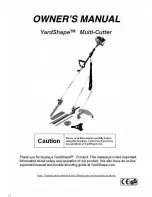
SERVICE INSTRUCTIONS
General
Instrument Case Removal
The following instructions are intended as an aid for the
electronic technician, who is carrying out readjustments
on the HM 203-4, if the nominal values do not meet the
specifications. These instructions primarily refer to those
faults, which were found after using the Test Instruc
tions. However, this work should only be carried out by
properly qualified personnel. For any further technical in
formation call or write to HAMEG. Addresses are provid
ed at the back of the manual. It is recommended to use
only the original packing material, should the instrument
be shipped to HAMEG for service or repair (see also War
ranty, page M 1).
Mains/Line Voltage Change
The instrument has an appliance inlet at the rear. This
device contains the power fuse, which is interchangeable
for the different mains/line voltages. The fuse holder with
its square top plate can be pulled out by means of a small
screwdriver (after disconnection of the power cord from
the plug-in unit), and
changing o f the power voltage
is
possible by turning this plate 90 degrees for each of the
four power voltages marked on the plate (see triangle
below
the fuse holder). The fuse holder should then be
plugged in again in the desired position, which should be
the closest value o f the measured mains/line voltage
in your area.
Required power fuse-link:
5x20m m , time lag
(slow-blow),
2 5 0 V ~ , C,
to IEC 127/111; DIN 41662.
Mains/line voltage
1 1 0 V ~ ± 1 0 %
1 2 5 V -
± 1 0 %
2 2 0 V - ± 1 0 %
2 4 0 V - ± 1 0 %
Rated current
T 0.63A
T 0.63A
T 0.315A
T 0.315A
The power fuse has to match the set mains/line voltage
and must be changed if necessary. It should be checked
that only fuses of the specified type and current are used
in this case. Patched fuses or short circuit of the fuse
holder must not be used as an alternative.
The rear cover can be taken off after two cross recessed
pan head screws (M4x30mm) with two washers on it
have been removed and after unplugging of the power
cord's triple-contact connector. While the instrument
case is firmly held, the entire chassis with its front panel
can be withdrawn forward. When the chassis is inserted
into the case later on, it should be noticed that the case
has to fit under the flange of the front panel. The same
applies for the rear of the case, on which the rear cover is
put.
Caution
During opening or dosing o f the case, the instrument
must be disconnected from all power sources for
maintenance work or a change of parts or com
ponents. If a measurement, trouble-shooting, or an ad
justment on the opened instrument is unavoidable,
this work must be done by a specialist, who is familiar
with the risk involved.
When the instrument is set into operation after the
case has been removed, attention must be paid to the
accelerating voltage for the CRT —2000 V
—
and to
the operating voltages for both final amplifier stages
—
together 260 V. Potentials of these voltages are on
the CRT socket, on the upper and the lower horizontal
PCBs, and on the lateral PCB directly beside the CRT
neck. Such potentials are moreover on the checkpoint
strip on the upper PCB. They are highly dangerous and
therefore precautions must be taken. It is noticed fur
thermore that shorts occuring on different points of
the CRT high voltage and unblanking circuitry will
definitely damage some semiconductors and the opto-
coupler. For the same reason it is very risky to connect
capacitors to these points while the instrument is on.
Capacitors in the instrument may still be charged,
even when the instrument is disconnected from all
voltage sources.
Normally,
the capacitors are
discharged 6 seconds after switching off. However,
with a defective instrument, an interruption o f the load
is not impossible. Therefore, after switching off, it is
recommended to connect one by one all terminals of
the check strip on the upper PCB across IkQ to
ground (chassis) for a period o f 1 second.
Handling of the CRT needs utmost caution. The glass
bulb must not be allowed — under any circumstances
— to come into contact with hardened toots, nor
should it undergo local superheating (e.g. by soldering
iron) or local undercooling (e.g. by cryogenic-spray).
We recommend the wearing of safety goggles (implo
sion danger).
Please note Change Information,
if any, on last pago.
SI 20 3-4
















































